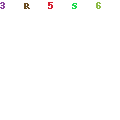Thursday's Therapy
Forms of Depression that Grief Sometimes Mimics
Most of us in having lost our child to death will feel many of the symptoms of depression as our symptoms of natural, healthy grief often overlap those of a genuine case of depression. (Most consider the blues that come with grief as a natural and healthy form of sadness, not necessarily a "depression.")
But we are coming up on the season where certain people may be especially susceptible to "winter blues," which can often be an actual onset of a type of depression called "Seasonal Affective Disorder." This information is found through the Mayo Clinic, provided to readers by "Grieving Mothers":
Seasonal Affective Disorder (also called S.A.D.) is a type of depression that occurs at the same time every year. If you're like most people with Seasonal Affective Disorder, your symptoms start in the fall and may continue into the winter months, sapping your energy and making you feel moody. Less often, seasonal affective disorder causes depression in the spring or early summer.
Treatment for seasonal affective disorder includes light therapy (phototherapy), psychotherapy and medications. Don't brush off that yearly feeling as simply a case of the "winter blues" or a seasonal funk that you have to tough out on your own. Take steps to keep your mood and motivation steady throughout the year.
Symptoms of Seasonal Affective Disorder (S.A.D.)
By Mayo Clinic staff
In most cases, seasonal affective disorder symptoms appear during late fall or early winter and go away during the sunnier days of spring and summer. However, some people with the opposite pattern have symptoms that begin in spring or summer. In either case, symptoms may start out mild and become more severe as the season progresses.
Fall and winter Seasonal Affective Disorder (winter depression)
Winter-onset seasonal affective disorder symptoms include:
Depression
Hopelessness
Anxiety
Loss of energy
Heavy, "leaden" feeling in the arms or legs
Social withdrawal
Oversleeping
Loss of interest in activities you once enjoyed
Appetite changes, especially a craving for foods high in carbohydrates
Weight gain
Difficulty concentrating
Spring and summer seasonal affective disorder (summer depression)
Summer-onset seasonal affective disorder symptoms include:
Anxiety
Trouble sleeping (insomnia)
Irritability
Agitation
Weight loss
Poor appetite
Increased sex drive
Seasonal changes in bipolar disorder
In some people with bipolar disorder, spring and summer can bring on symptoms of mania or a less intense form of mania (hypomania). This is known as Reverse Seasonal Affective Disorder. Signs and symptoms of reverse seasonal affective disorder include:
Persistently elevated mood
Hyperactivity
Agitation
Unbridled enthusiasm out of proportion to the situation
Rapid thoughts and speech
When to see a doctor
It's normal to have some days when you feel down. But if you feel down for days at a time and you can't seem to get motivated to do activities you normally enjoy, see your doctor. This is particularly important if you notice that your sleep patterns and appetite have changed or if you feel hopeless, think about suicide, or find yourself turning to alcohol for comfort or relaxation.














































No comments:
Post a Comment